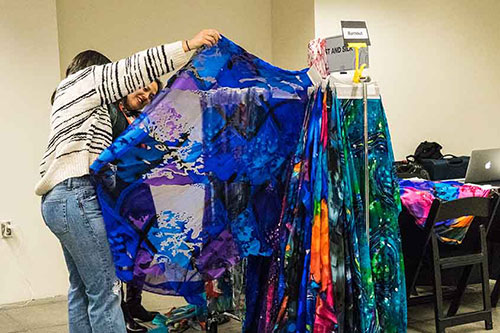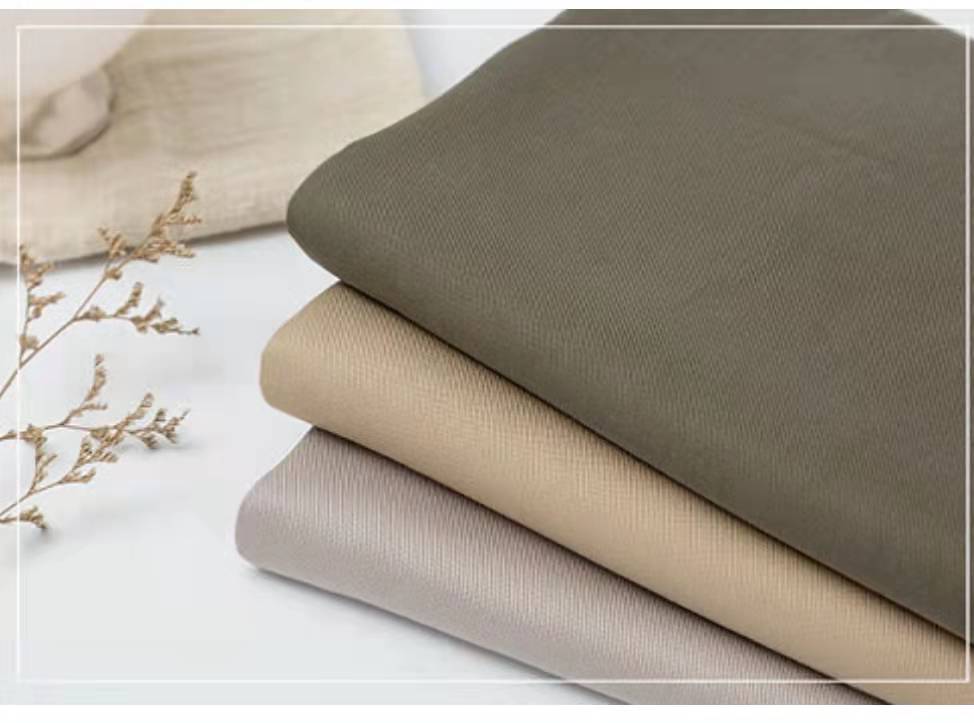FW
Salvatore Ferragamo, one of the global leaders in the luxury sector, in a meeting chaired by Ferruccio Ferragamo, released the Consolidated Interim Report as of September 30, 2019, prepared according to IAS/IFRS international accounting principles.
Among the product categories, at constant exchange rates, footwear posted an increase of 3.4 per cent and handbags and leather accessories of 4.4 per cent as against the corresponding period last year. Fragrances registered a 11.0 per cent decrease at constant exchange rates, with its third quarter performance declining by 35.2 per cent at constant exchange rates.
The Operating Profit excluding IFRS162 (EBIT excluding IFRS162) was down by 5.7 period at 96 million euros as against 102 million euros recorded in the first nine months of 2018.
The net profit for the period including the minority interest amounted to 65 million euros declining by 0.5 per cent against the corresponding period in 2018. The 9M 2019 Group Net Profit excluding IFRS162 was 63 million Euros, compared to 64 million euros in recorded in the first nine months of 2018, marking a decrease of 1.5 per cent.
The Consolidated Interim Report of Salvatore Ferragamo was prepared on September 30, 2019, prepared according to IAS/IFRS international accounting principles. Alongwith the introduction of the new IFRS 16 accounting principle as of January 1, 2019, relating to the accounting treatment of leasing contracts, to make data at September 30, 2019 comparable with the data of the previous periods, the company introduced some performance indicators elaborated excluding the impacts of the new IFRS 16 accounting principle. These indicators have been denominated “excluding IFRS16” with reference to P&L figures.
"ASW 2020 will serve as the leading hub for apparel companies to interact with Indian subcontinent. Bangladesh, India and Sri Lanka are major garment manufacturing hubs that have strengths which make them favorites with buyers and also complement each other"
 ASW (Apparel Sourcing Week) 2020 will serve as the leading hub for apparel companies to interact with Indian subcontinent. Bangladesh, India and Sri Lanka are major garment manufacturing hubs that have strengths which make them favorites with buyers and also complement each other. Practically every international buyer is in these three countries working not only on their core competence but also on developing new capabilities, as the hubs are being seen as strong alternates to China in the wake of the increasing interest.
ASW (Apparel Sourcing Week) 2020 will serve as the leading hub for apparel companies to interact with Indian subcontinent. Bangladesh, India and Sri Lanka are major garment manufacturing hubs that have strengths which make them favorites with buyers and also complement each other. Practically every international buyer is in these three countries working not only on their core competence but also on developing new capabilities, as the hubs are being seen as strong alternates to China in the wake of the increasing interest.
India offers a complete textile chain for fashion trends With a traditionally strong base in textiles and numerous clusters for value additions, India is an ideal destination for sourcing value-added garments thinks India. The country provides a complete supply chain and infrastructure to the manufacturers who have the experience to make any kind of garment. Additionally, policies such as ‘Make in India’ are supporting the industry which is not only strengthening the traditional regions like Ludhiana, Delhi-NCR, Ahmadabad, Tripura, and Bengaluru, but also assisting in the upgradation of its eastern states, which will provide a wider scope for the manufacturers. Logistics is another positive for India. With 13 seaports, India forms one of the biggest peninsulas in the world and can handle huge volumes or shipment with ease.
Sri Lanka excels in sustainable and high-quality manufacturing: Sri Lanka is the most ideal destination for any buyer looking to enhance its sustainable image and work with factories that have a reputation of not only talking ethical and green, but are also leaders in sustainable practices. Worn by quality-conscious consumers all over the world, products belonging to top international brands of sportswear, lingerie and swimwear are sourced and manufactured in Sri Lanka. Sri Lanka’s apparel sector outperforms other South Asian countries in terms of quality in garments, short lead time, reliability, along with social compliance and sustainability.
Bangladesh balances the quality content Though Vietnam has recently grown at a fast pace, Bangladesh has been the world’s second-largest garment exporter for many years for a reason. For the country, the industry is very critical with 83 percent of exports coming from the RMG sector which contributes 20 percent to its GDP and garment manufacturing employs around 4.50 million people in the country. The biggest strength of the country is its adaptability to change with the evolving global pace in the fashion industry, which is further boosted by the relatively cheaper and vast workforce. Despite recent hikes in wage rates, the minimum wage in Bangladesh is still lower than that in China, Cambodia, India, and Vietnam and that also adds an edge over its competitors. Significantly, Bangladesh qualifies for duty-free market access or reduced tariff facilities to 52 developed and developing nations including countries in the EU, Australia, Switzerland, Japan, Turkey, Russia, Norway, New Zealand, China, South Korea, Thailand, Malaysia and India.
"The company outlined the tastes of New York by showcasing 'conversational' prints and scenic designs. The company’s florals in a patchwork arrangement are currently very much on trend and are set to be one of the key looks for the spring/summer 2020 season. Another European exhibitor Lyon-based Ercea International showcased its range of high added-value print-on-pleat products, which reduce the workload of garment makers"
 The recent edition of New York Texfusion Summer 2019 focused more on the price of the garments than their quality. The show displayed showy, conversation-piece prints, and bold and distinctive patterns. In addition, it also showcased eco-friendly textiles known for their low environmental impact.
The recent edition of New York Texfusion Summer 2019 focused more on the price of the garments than their quality. The show displayed showy, conversation-piece prints, and bold and distinctive patterns. In addition, it also showcased eco-friendly textiles known for their low environmental impact.
A print specialist who exhibited this year was Germany's Gera Gmbh. The company outlined the tastes of New York by showcasing 'conversational' prints and scenic designs. The company’s florals in a patchwork arrangement are currently very much on trend and are set to be one of the key looks for the spring/summer 2020 season. Another European exhibitor Lyon-based Ercea International showcased its range of high added-value print-on-pleat products, which reduce the workload of garment makers.
Many participating companies felt prices would always trump design quality when it came to actually winning over buyers. The feeling is price is always the key criteria especially in the US market.
Preference for woven fabrics with checks and gingham
Besides, price sensitivity companies also noted the differences in fabric preferences between the US and Europe. In Europe, the demand is for knitted fabrics while American consumers prefer woven and polyester fabrics.
The US consumers also prefer checks and gingham. For many firms ginghams are the cornerstone of their US business.
Ethical production gains prominence
In the past, consumers and buyers were rarely attracted by eco-friendly products, today they flaunt their green credentials to appeal to a young demographic audience. As Thermore, a Milan-based manufacturer of insulated fabric reveals earlier recycled products used to be seen as interesting. Companies liked to have a recycled product, with its wearability being almost incidental. Now, there is a shift from recycled to overall performance and look taking the foreground.
Along with a low carbon footprint, the ethical nature of the whole production chain is also becoming a major purchase criterion, especially amongst younger customers. There is increasing awareness among consumers about synthetic alternatives which is driving their demand in the sector.
German sportswear maker Adidas is closing two factories in Germany and the United States and shifting manufacturing to cheaper Asian countries. These speed factories were using robots and 4D printing to make sneakers more quickly, more customised and closer to sales outlets. Adidas at one time saw these factories as proof that manufacturing jobs could return to high-wage countries. But now Adidas will get these speed factory shoes produced by its suppliers in Asia. It feels these suppliers have advanced techniques and that the move would make production of the shoes more flexible and economic while simultaneously expanding the range of products available.
As of now the two factories produce just a million of the roughly 400 million athletic shoes made by the group each year. The factory is operated by the German technology firm Oechsler, which has collaborated with Adidas on the project. But Oechsler and Adidas will continue to work together on soles for football shoes and 4D printed soles. Like 3D printing, 4D printing produces three-dimensional objects at the touch of a button but then goes further by creating materials that change properties when they come into contact with triggers such as water or heat.
Denimsandjeans will organise a denim B2B trade show on March 4-5, 2020 at Sunshine City, in the Japanese capital city Tokyo. Focusing on latest developments in the denim industry the show will attract over 40 participants from all over the world. It will attract a large number of reputed retailers and brands. The theme #designedinnovation, will highlight latest developments in the denim industry.
Japan is also the third largest importer of jeans globally after the EU and the US, with approximately 175-180 million jeans imported in a year. In the first eight months ending August 2019, Japan imported 116 million pieces of denim garments, and the figure is expected to reach 174 million pieces by the end of this year.
Japan is also home to top denim brands which bring some of the most unique products globally. Brands like Kapital, Momotara, Samurai, Sugarcane and many others have created their own niche globally with their offerings not affected by seasons.
Birla Cellulose has achieved a breakthrough in manufacturing viscose fiber using pre-consumer cotton fabric waste. This new line of viscose is already being adopted and available for sale to brands and retailers. This innovation has been done through in-house R&D and uses a minimum of 20 per cent pre-consumer industrial fabric waste. Fabrics from the fiber offer excellent attributes similar to virgin fiber. The business will work on further developing products made with more than 50 per cent industrial fabric waste as well as post-consumer clothing as inputs in 2020.
Birla Cellulose, a part of Aditya Birla is a global leader in manmade cellulose fiber. Birla Cellulose has been in active collaboration with brands, technology providers and textile chain actors to integrate and enhance value. Going forward, Birla Cellulose will intensify and strengthen its specialty portfolio towards value-added green textile solutions. The launch of recycled viscose fiber is part of its commitment for circularity and sustainable practices. The company is also working on developing fibers using post-consumer clothing as inputs in collaboration with technology providers and brands. Birla Cellulose aims at reducing its water intensity by 50 per cent. This will be achieved by the application of new technologies based on the principles of reduce, reuse, recycle.
Jordan’s garment and leather exports increased eight per cent during the first eight months of this year. The garments and leather industries sector contributes about 29 per cent of the total employment in the industrial sector while accounting for 26 per cent of the total national exports. Additionally, it contributes about seven per cent of the total existing production of the industrial sector. The contribution of garment and leather industries sector to the national GDP has doubled over the last two years.
The number of Jordanian workers in the sector has increased by 119 per cent from 2010 to 2018. However, clothing sales in Jordan have been hit by customs fees and taxes, causing the kingdom to lose its competitive edge. Other challenges facing the sector include illegal e-commerce and the mail package trade that abuses regulations and allows entry of goods with exemption from customs fees. Anyone with a passport and a national identification number can order up to five packages a month, with exemption from customs. However, people abuse these regulations and use friends’ passports to order goods without having to pay extra customs or taxes and then sell these goods at low prices.
Karl Mayer has developed a new line of functional, warp-knitted textiles and smart, on-trend lingerie and clothing. An ECG shirt for measuring vital signs features integrated sensor technology. The electrically conductive material required is incorporated directly into the textile on the warp knitting machine in the desired arrangement. Warp-knitted textiles have been especially developed to meet the requirements of the sports sector. These include lightweight, stable mesh linings, hardwearing shoe fabrics, stylish four-way-stretch fabrics with breathability and compression characteristics, a variety of tricot fabrics with decorative, striped patterns, and warp-knitted spacer textiles for a range of end uses.
Karl Mayer has developed a warp knitted alternative to conventional knitted fabrics for sportswear manufacturers who rely on jersey fabrics. The soft textiles offer a high degree of elasticity with good recovery, smooth, stable edges with no tendency to curl for free-cut style and a wonderful, flowing fall – just like their knitted counterparts. And 4D knit solutions illustrate what can be achieved with double-bar raschel technology for 3D warp-knitted textiles. With their unique, three-dimensional, cushioning construction, these voluminous fabrics offer a new level of design potential. Readymade panels, e.g. entire back components for use in midlayer jackets, can be produced, as well as imaginative designs with pronounced sculptured effects, and combinations of 4D effects and breathable openings.
Levi’s recently launched a capsule collection through its eco-friendly line Wellthread designed to be easily processed by an industrial fabric-recycling plant. The collection was made in collaboration with surf brand Outerknown. It comprises graphic tees, Western-style shirts, jeans, and even a trucker jacket. Each of its clothing item is made from a single material.
For instance, the T-shirts are made entirely from cotton (including 25 per cent recycled cotton from jeans and other scraps). There is also a fleece-lined trucker jacket whose design enables the user to take out polyester fleece lining to recycle it separately from hemp denim. The liner is made entirely with polyester from the thread to label, and the shell is made out of cottonised hemp. When they’re separated, they are ideal input into both the cotton, cellulosic or polyester recycling system.
Miss Sixty is working to strengthen its presence in Europe. The brand’s most important retail market is Italy, followed by the UK with two monobrand stores and Russia with five direct franchising stores. For wholesale revenues, Russia is the most important market, followed by Greece, Portugal and East Europe. The brand has registered significant progress in Spain and Russia. It operates through nine monobrand stores (including outlets) in Europe. It also operates through a total of 165 multi brand stores–50 in Greece, 46 in Spain, 37 in Portugal and 12 in Russia. The Milan flagship is the hub of its international e-commerce for its omnichannel distribution and from where all pieces are shipped. The company is always very active in looking for new partners for increasing visibility and distribution of its products through multibrand online shop-in-shops. E-commerce, where the brand has been operating since August 2018, is registering a 132 per cent growth.
The plan is to increase wholesale distribution in Germany and operate via wholesale in the UK. Expansion in Spain and Italy has begun. Every year it launches some special capsule. Among the capsules planned are with Emoji and Buff Monster, iconic images of Marilyn Monroe and a special collaboration with US artist Wrdsmth.












